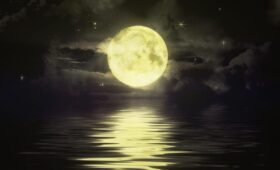Chinese New Year is the festival that celebrates the beginning of a new year on the traditional lunisolar Chinese calendar.
Alao Called Chinese Spring Festival
In Chinese, the festival is commonly referred to as the Spring Festival
as the spring season in the lunisolar calendar traditionally starts with lichun,
the first of the twenty-four solar terms which the festival celebrates around the time of the Chinese New Year.
Marking the end of winter and the beginning of the spring season,
observances traditionally take place from Chinese New Year’s Eve,
the evening preceding the first day of the year to the Lantern Festival,
held on the 15th day of the year.
The first day of Chinese Spring Festival begins on the new moon that appears between 21 January and 20 February.
Chinese Spring Festival is one of the most important holidays in Chinese culture,
and has strongly influenced Lunar New Year celebrations of its 56 ethnic groups.
Chinese Spring Festival is associated with several myths and customs.
The festival was traditionally a time to honour deities as well as ancestors.
Within China, regional customs and traditions concerning the celebration of the New Year vary widely,
and the evening preceding the New Year’s Day is frequently regarded
as an occasion for Chinese families to gather for the annual reunion dinner.
It is also a tradition for every family to thoroughly clean their house,
in order to sweep away any ill fortune and to make way for incoming good luck.
Another custom is the decoration of windows and doors with red paper-cuts and couplets.
Popular themes among these paper-cuts and couplets include good fortune or happiness, wealth, and longevity.
Other activities include lighting firecrackers and giving money in red envelopes.
Mythology
According to legend, Chinese Spring Festival started with a mythical beast called the Nian
(a beast that lives under the sea or in the mountains) during the annual Spring Festival.
The Nian would eat villagers, especially children in the middle of the night.
One year, all the villagers decided to hide from the beast.
An older man appeared before the villagers went into hiding and said that he would stay the night and would get revenge on the Nian.
The old man put red papers up and set off firecrackers.
The day after, the villagers came back to their town and saw that nothing had been destroyed.
They assumed that the old man was a deity who came to save them.
The villagers then understood that Yanhuang had discovered that the Nian was afraid of the color red and loud noises.
Then the tradition grew when New Year was approaching,
and the villagers would wear red clothes, hang red lanterns,
and red spring scrolls on windows and doors and used firecrackers and drums to frighten away the Nian.
From then on, Nian never came to the village again.
The Nian was eventually captured by Hongjun Laozu, an ancient Taoist monk.
Naming
While “Chinese New Year” remains the official name for the festival in Taiwan,
the name “Spring Festival” was adopted by the People’s Republic of China instead.
On the other hand, some in the Chinese diaspora use the term “Lunar New Year”,
while “Chinese New Year” remains a popular and convenient translation for people of non-Chinese cultural backgrounds.
Along with the Han Chinese in and outside Greater China,
as many as 29 of the 55 ethnic minority groups in China also celebrate Chinese Spring Festival.


